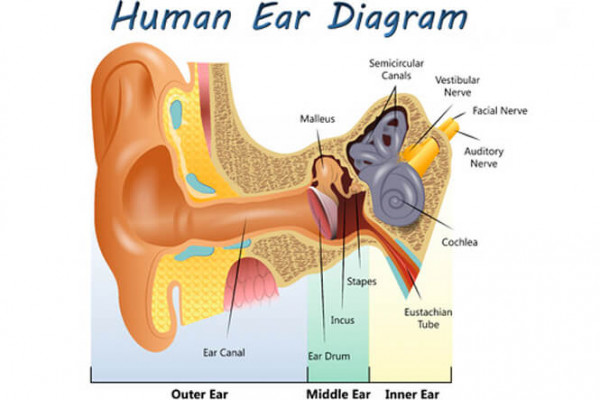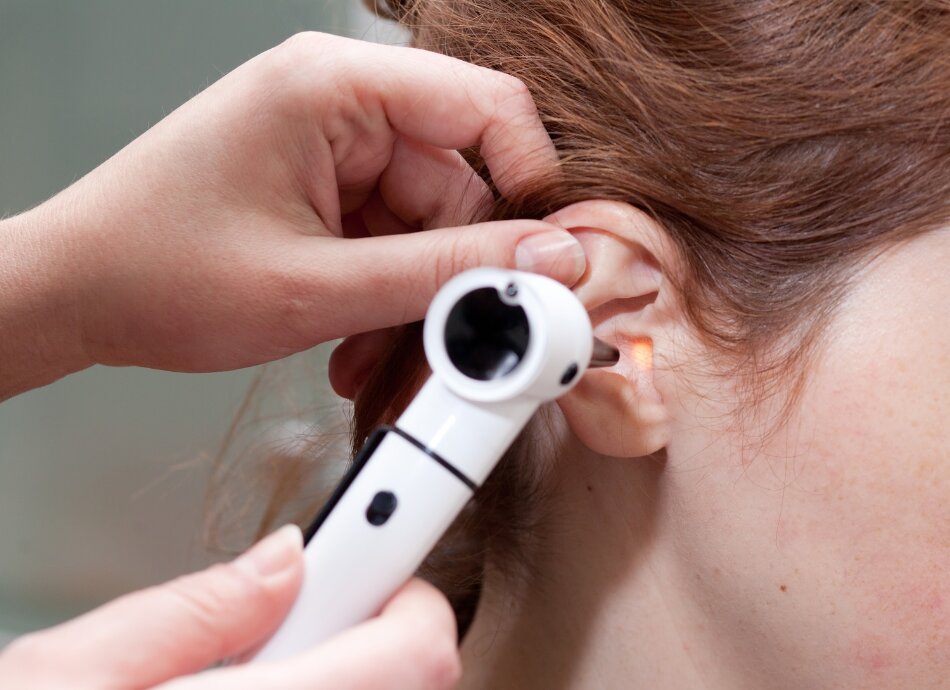The eustachian (yoo-stay-shun) tube is a tube that runs from your ear to the back of your nose. It's normally closed, but opens when you swallow or yawn. This lets air into your middle ear.
If your eustachian tube isn't working properly, this causes reduced air pressure in your middle ear, which pulls your eardrum inwards. This can make your ear feel blocked and may cause ear pain. You may also notice you can't hear properly.

Image credit: 123RF






